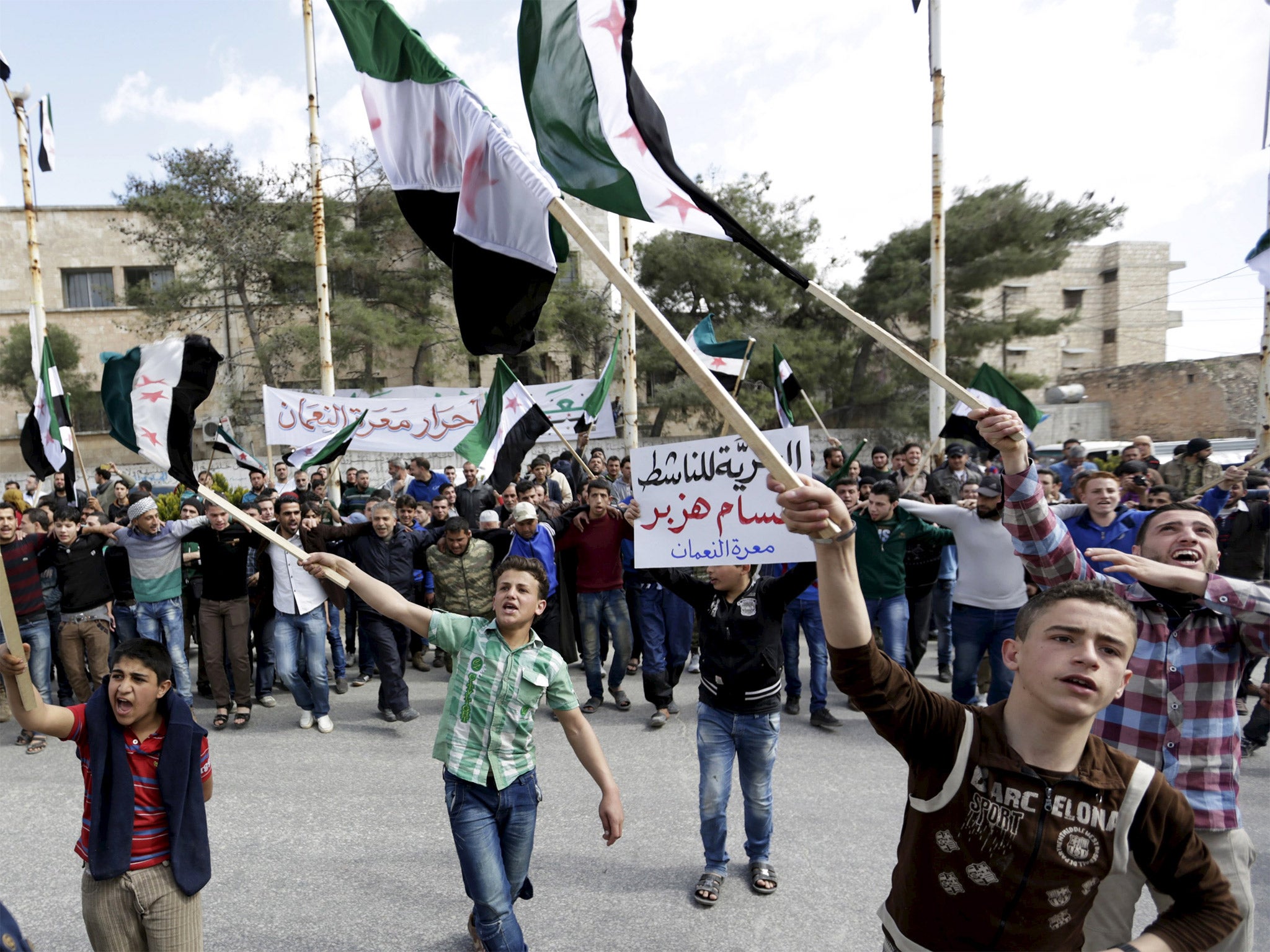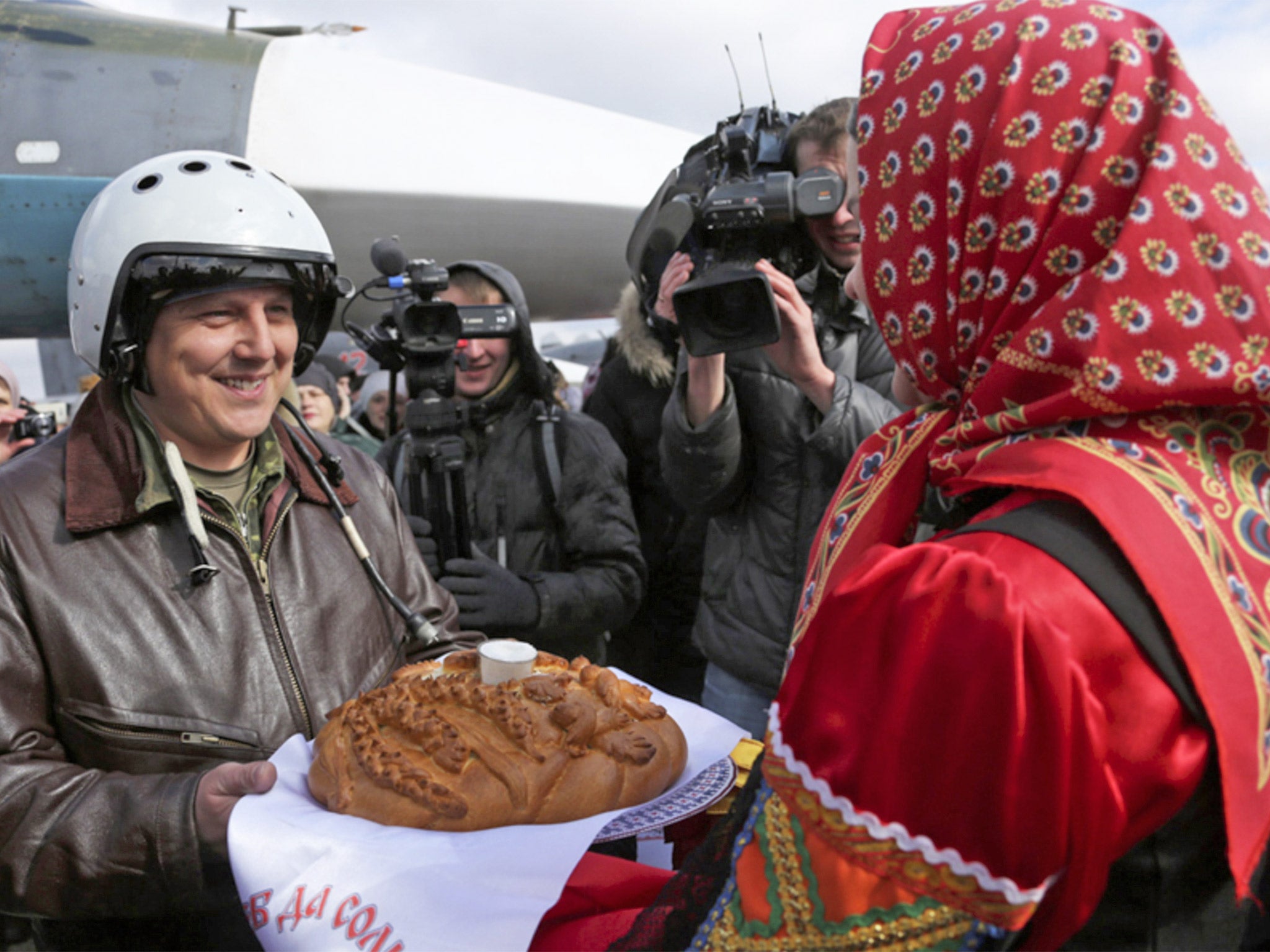Syria war five years on: Bringing conflict to an international level is helping to hold the ceasefire
However messy, Russian and US dominance – and Russia’s swift withdrawal – helped quell violence in Syria, but ending war altogether is a different matter

Your support helps us to tell the story
From reproductive rights to climate change to Big Tech, The Independent is on the ground when the story is developing. Whether it's investigating the financials of Elon Musk's pro-Trump PAC or producing our latest documentary, 'The A Word', which shines a light on the American women fighting for reproductive rights, we know how important it is to parse out the facts from the messaging.
At such a critical moment in US history, we need reporters on the ground. Your donation allows us to keep sending journalists to speak to both sides of the story.
The Independent is trusted by Americans across the entire political spectrum. And unlike many other quality news outlets, we choose not to lock Americans out of our reporting and analysis with paywalls. We believe quality journalism should be available to everyone, paid for by those who can afford it.
Your support makes all the difference.The withdrawal of Russian forces from Syria strengthens the current ceasefire, de-escalates the violence and brings in view the distant prospect of an end to five years of war. The extent of the Russian pull-out remains uncertain as some of its bombers flew home on 15 March, while others attacked Isis fighters holding the ancient city of Palmyra.
Russia has succeeded in achieving most of its war aims since it started air strikes in support of President Bashar al-Assad and against his opponents on 30 September last year. At that time the Syrian army was retreating after a series of defeats, while today it is advancing on all fronts, though it is unlikely to win a total victory.
Russian military success means that it has re-established itself as a great power in the core region of the Middle East for the first time since the collapse of the Soviet Union in 1991. By pulling out most of Russia’s forces at this stage, President Vladimir Putin avoids overplaying his hand and being sucked into the Syrian quagmire as his critics had predicted.
Russia never sent great forces to Syria and its intervention primarily involved launching air strikes in support of the Syrian army, which were carried out by 35 fixed-wing aircraft, helicopters and long-distance missiles. But this was enough to multiply vastly the firepower of the Syrian army and change the balance of power on the ground. At the same time, it has become clear over the past month that Russia does not want to give Mr Assad a blank cheque enabling him to fight on until final victory.
This was the mistake made by the US and its allies, including Britain, in Afghanistan after the defeat of the Taliban in 2001 and again in Iraq after the invasion in 2003. In both cases, a US-led coalition failed to turn military victory into political success because it was propping up a weak local partner seeking to use foreign backing to monopolise power locally. Mr Putin is evidently trying to avoid this trap and maximise political gains without being dragged into a long conflict. He pursued a similar strategy in the 2008 war in Georgia when Russia won a quick victory and brought the conflict to a close.

Russian intervention five months ago undoubtedly changed the military balance of power in favour of Mr Assad, so withdrawal could help the armed opposition. But the Russian Defence Minister Sergei Shoigu clearly believes that the tide has turned permanently, telling Mr Putin that “the terrorists have been cleared out of Latakia, communications have been restored with Aleppo …and we have cleared most of the provinces of Hama and Homs.” Supported by 9,000 Russian air missions, the Syrian army has ended Isis’s long siege of Kweires air base east of Aleppo and retaken three large oil and gas fields near Palmyra.
Important though these gains are, they do not entirely reverse the opposition successes last May when fighters captured Idlib City and Palmyra. Overall, Russia has enabled the Syrian government to expand its heartlands in Latakia province, move to try to seal off the Turkish border and defend the main north-south route linking Damascus, Homs, Hama and Aleppo. The Syrian opposition is weaker than it was and Isis suffered heavy casualties because it has been squeezed between the Syrian army and the Syrian Kurds backed by US air power.
Maps showing control by one side or the other in Syria are misleading because half the country is desert or semi-desert. A more meaningful comparison is the size of the populations controlled by different parties in the conflict. Around five million Syrians are refugees, mostly in Turkey, Lebanon and Jordan, leaving about 16 million Syrians inside the country, of whom about 10 million are in government-held areas and two million each in the Kurdish-held, Isis and non-Isis opposition zones. In other words, Mr Assad is in a strong but not overwhelmingly powerful position.
But it is a long time since the balance of power within Syria was determined by local players. This was briefly true in 2011 at the start of the uprising against Mr Assad and his Baathist government, but these purely Syrian forces were soon outweighed by regional powers such as Turkey, Saudi Arabia, Qatar and Iran. From 2012 to the capture of Mosul by Isis in June 2014, these countries fought an inconclusive proxy war in Syria. But with the rise of Isis, Syria entered a third or international phase in the war in which the US and Russia became the real political and military decision-makers. Even so, it will not be easy for Syria to escape being the chosen battleground for confrontations being fought out between Shia and Sunni, Iran and Saudi Arabia, Arab and Kurd.

A fruit of US and Russian dominance is the unexpected success of the “cessation of hostilities”, declared on 27 February after negotiations between Moscow and Washington, and the delivery of supplies to besieged communities. The secret of the surprise success of the ceasefire so far is the degree to which the fighters on the ground in Syria are the proxies of outside powers and cannot really act without their support. The US and Russia may not be able to give direct instructions to these regional sponsors, but it is difficult for states such as Turkey and Saudi Arabia to oppose US and Russian policy directly when these two powers act together.
Thanks to the “internationalisation” of the Syrian crisis, the ceasefire is holding for the first time since the war began. Relations between Russia and the US involve rivalry as well as co-operation and it is never certain which relationship will determine policy. Moreover, the ceasefire does not apply to all the combatants, above all it does not cover Isis and Jabhat al-Nusra, al-Qaeda’s branch in Syria, the two movements that dominate the Syrian armed opposition. Isis may be battered and unable to hold fixed positions in the face of concentrated air strikes, but its blend of guerrilla tactics and terrorism directed against civilian targets is still murderously effective.
A weakness of Western policy is to pretend that there is a “moderate” armed opposition holding territory, though sponsors of this belief can never explain where this territory is to be found or make any attempt to go there. David Cameron famously claimed that there are 70,000 armed moderates, but they appear to be disparate groups of gunmen fighting for a tribe, clan, a village or for whoever will pay them. They are not capable of fighting a well-organised fanatical movement such as Nusra, shown on 13 March when Nusra overran bases of the largest “moderate” force known as Division 13.
The Russian withdrawal and the ceasefire may both be messy, but these are serious and effective steps towards reducing the killing. But with the armed opposition dominated by Nusra and Isis, neither of which are in the business of compromising with anybody, it will be far more difficult to end the war.
Chaos and Caliphate: Jihadis and the West in the Struggle for the Middle East, by Patrick Cockburn, will be published in April by OR Books
Join our commenting forum
Join thought-provoking conversations, follow other Independent readers and see their replies
Comments